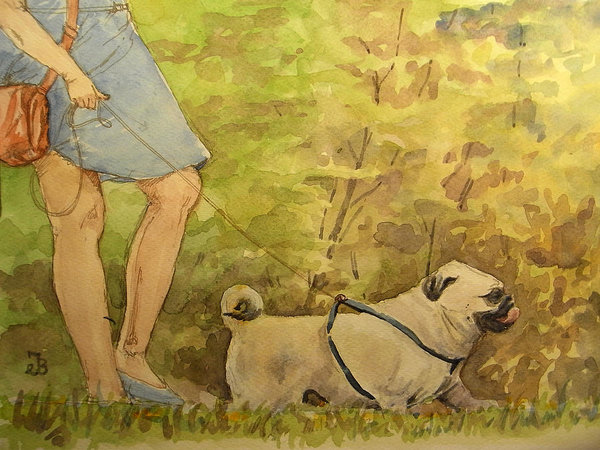
In the history of some breeds – usually sporting breeds – there were lines or “strains” that emerged to become known as distinct types often split into a “field” type and a conformation “type.” The English Setter’s Laverack and Llewellin strains might be the best example of this, but it’s also seen in Labrador Retrievers.
It might surprise some to learn that one of our toy breeds, the Pug, also had a few strains at one time.
An 1877 issue of “The Country, “a weekly journal devoted to “the dog, the gun, to yachting, and all outdoor sports, touched upon this, as did Wilhelmina Swainston-Goodge in her book, The Pug-Dog – Its History and Origin.
Lord and Lady Willoughby d’Eresby developed their “Willoughby line” of Pugs from dogs imported from Hungary and Russia. Indeed, one Pug that Lady d’Eresby obtained (after a good deal of trouble) had belonged to a Hungarian countess, but, the author, Stonehenge wrote in his Dogs of the British Islands. the Spaniels that it was a “bad” color, a mixture of the stone fawn now peculiar to the “Willoughby line, and that it had a face much longer than would now be approved of by Pug fanciers. Nevertheless, this was regarded as an old established line dating back to 1860, and Willoughby Pugs came to be noted for being taller, thinner, and leggier. They were, in Stonehenge’s opinion, a “bad” color, a silver fawn color (sometimes called “smutty,” or pepper and salt), with heads that were entirely, or nearly entirely black heads. Pugs owners of today might find the names of “Nell” or “Mops” in their pedigrees – a pair of prominent Willoughby Pugs.
Far removed from the rarified air of a Lord and Lady, a pub owner from Walham Green named Charles Morrison developed his line. “Morrison line” Pugs were developed from a pure Dutch Pug said to be descended from Queen Charlotte’s dogs (she, the wife of George III), who acquired her foundation Pugs from the continent. Morrison Pugs more resemble our Pugs of today: A smaller, cobbier and compact body with rich apricot-fawn coats and lovely heads with black masks. Breed historians have suggested that the breed improved with two Morrison Pugs, in particular, “Punch” and “Tetty.”
A little after the midpoint of the 19th century, two Pugs of “pure” Chinese lines, “Moss” and “Lamb” were brought to England; it was the use of one of their offspring, “Click, in breeding programs that helped to blend the Willoughby and Morrison lines leading to the Pug of today. An early recipient of the merging was Queen Victoria who preferred apricot-fawn Pugs, and whose “Windsor Pugs” came from both strains. To this day, breed veterans say they can pick out the individual characteristics of the two types of Pugs. Some “Old Timers” may still mention the”Willoughby Pug” or “Morrison Pug when referring to the fawn color of the Willoughby line, or the apricot gold color of the Morrison line. Each had such consistent breeding traits that the lines existed for many years.
Image: “Pug Walking” by Juan Bosco is available in various fine art forms here.
